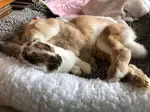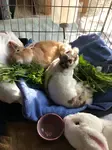- Home
- Senior Rabbit Care
Senior Rabbit Care
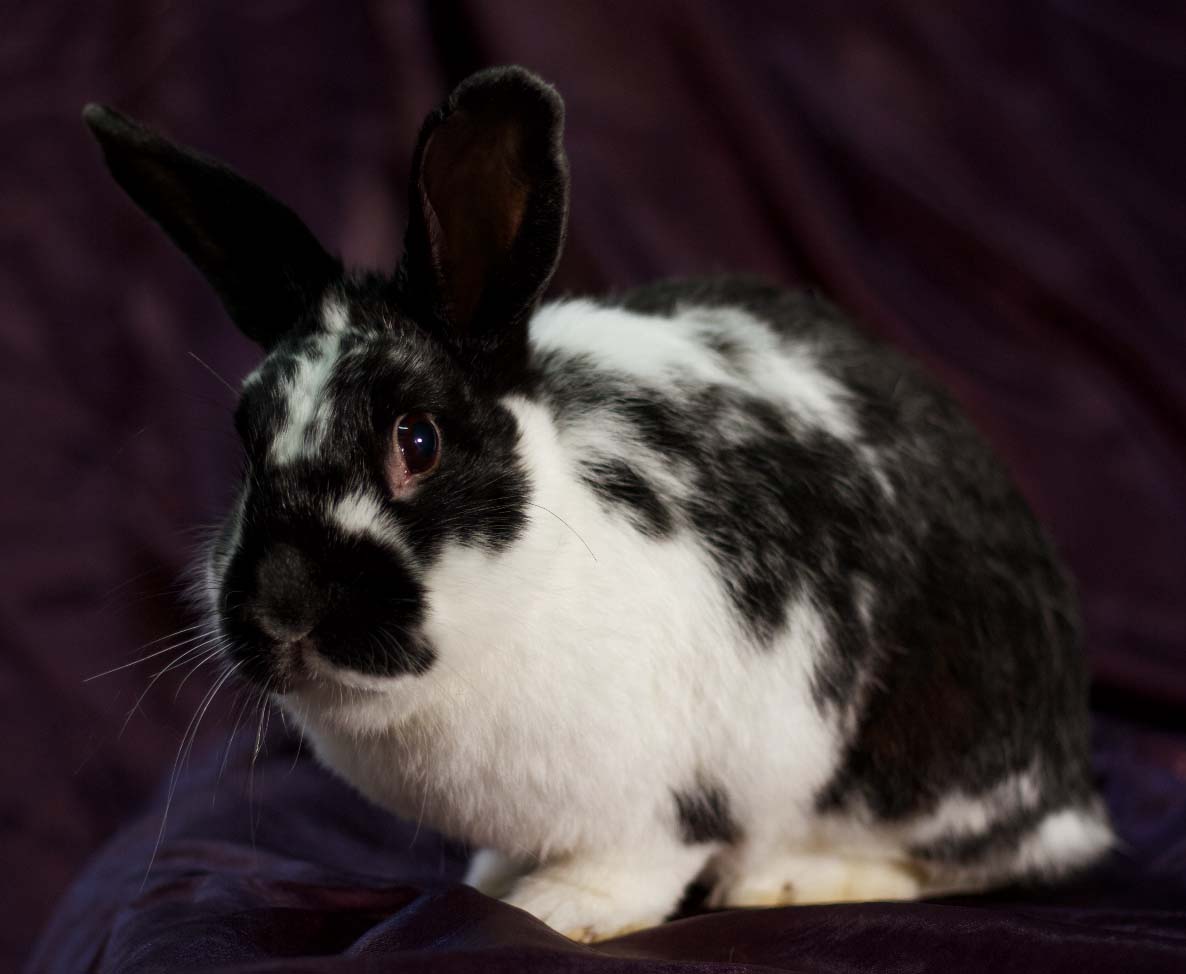 A 10-year-old handsome Whoppy.
A 10-year-old handsome Whoppy.Photo by Dustin Yoder
Senior Rabbit Care 101
Senior rabbit care seems daunting at first, but it can soon become routine and extend the quality of life for your aging bunny. It can be an extremely rewarding time and strengthen the bond you have with your bun.
Our pet rabbits are seniors at 7 or 8-years-old, but it is breed dependent. Generally, smaller breeds live longer than the larger breeds, such as Flemish Giants which are considered seniors around the age of 4 and have the life expectancy of about 7-8 years. However, rabbits are individuals. Like some people, they may not think about slowing down until they are much older.
When your bunny reaches the age of 7, it's important to start monitoring his health a little more closely. Part of senior rabbit care includes the following:
- Bring your bunny to your vet for an annual exam. Establish health baselines (x-rays and blood work) and get to know your vet (if you have not done so already). If your bunny is 10-years-old or older, consider bringing him in every 6-months for a check-up.
- Groom your bunny regularly. A typical short-haired bunny should be groomed every 8-10 weeks. This is a good time to perform your own wellness check, including a weight check. Learn how to do a wellness check in the First Aid Guide for the Domestic Rabbit.
- Observe your bunny. Does he want to jump in the litter box? Run around or play? Does he just want to snooze on something soft all day (who doesn't want to do that?)?
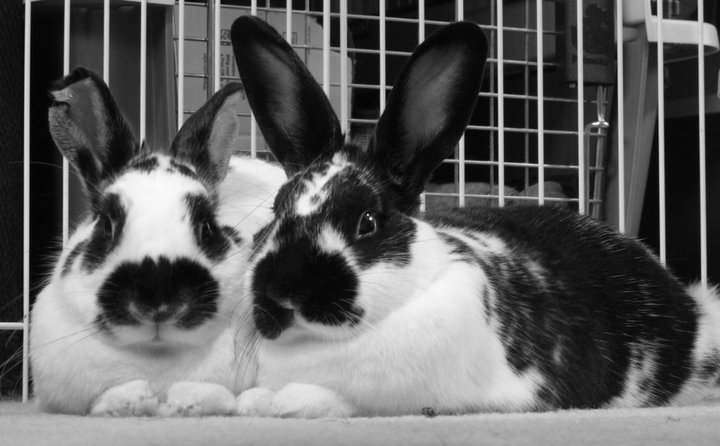 Oso and Whoppy
Oso and WhoppyPhoto by James Weygand.
Age-Related Issues
These are a few telltale signs that your bunny is aging:
- Thinning of the coat or coat color changing
- Thickening of the nails
- Decrease in activity - less interested in exploring
- Less interested in toys
- Reluctance to jump into the litter box, the couch, etc.
- Cataracts
- Weight loss
Like people, our senior bunnies experience more health issues as they get older. Much of it has to do with the body not quite functioning as it used to. Chronic issues, such as upper respiratory infections or malocclusion (an abnormal alignment of the upper and lower teeth) may take longer to resolve or occur more frequently. Loss of vision and/or hearing can also take place.
Cancer is not unusual. It can show up anywhere in the body, but one common place is the thymus which is located in the chest. Thymoma's can sometimes be treated with radiation and/or medication. Successful management of the disease depends on the individual bunny and the aggressiveness of the tumor.
One of the most common ailments is arthritis and/or spondylosis, which is a type of arthritis spurred by wear and tear to the spine. It happens when discs and joints degenerate, when bone spurs grow on the vertebrae, or both. These changes can impair the spine's movement and affect the nerves and other functions. (MacGill, 2019).
Spondylosis and arthritis issues affects how well a rabbit is able to groom himself, reach his cecotrophes, his litter box habits and the ease in which he moves and hops. The pain may cause frequent bouts of GI stasis or affect how well the rabbit can properly get into position to completely empty his bladder, the latter causing bladder sludge.
Encephalitozoon cuniculi
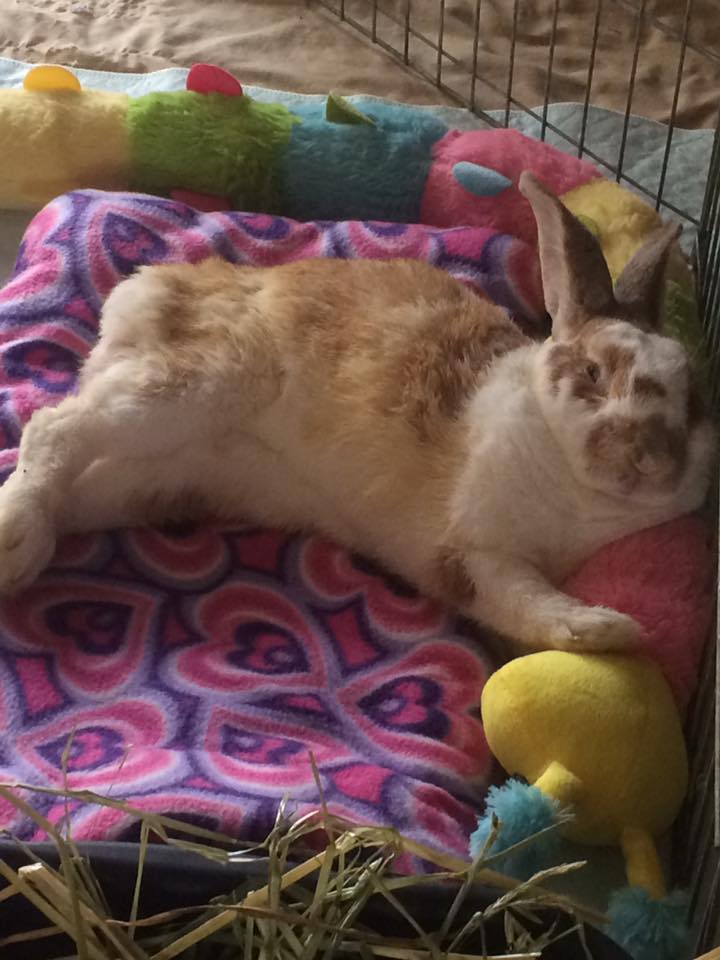 Benji laying on an extra fluffy bed.
Benji laying on an extra fluffy bed.E. cuniculi is a microsporidium organism that is very common in domestic rabbits. Many rabbits are born with it and those infected are either asymptomatic or show symptoms later in life, such as cataracts, bladder issues, head tilt and rear-end paralysis (also known as hind-end weakness). It's difficult to determine how much of the rear-end paralysis is due to E. cuniculi and how much is due to arthritis and/or spondylosis. Most likely all of these factors influence the bunny's condition.
Rear-end paralysis usually appears gradually. Adjusting the living environment and working with a rabbit-savvy vet can maintain a good quality of life for these disabled bunnies for a long time.
The Basics of Senior Rabbit Care
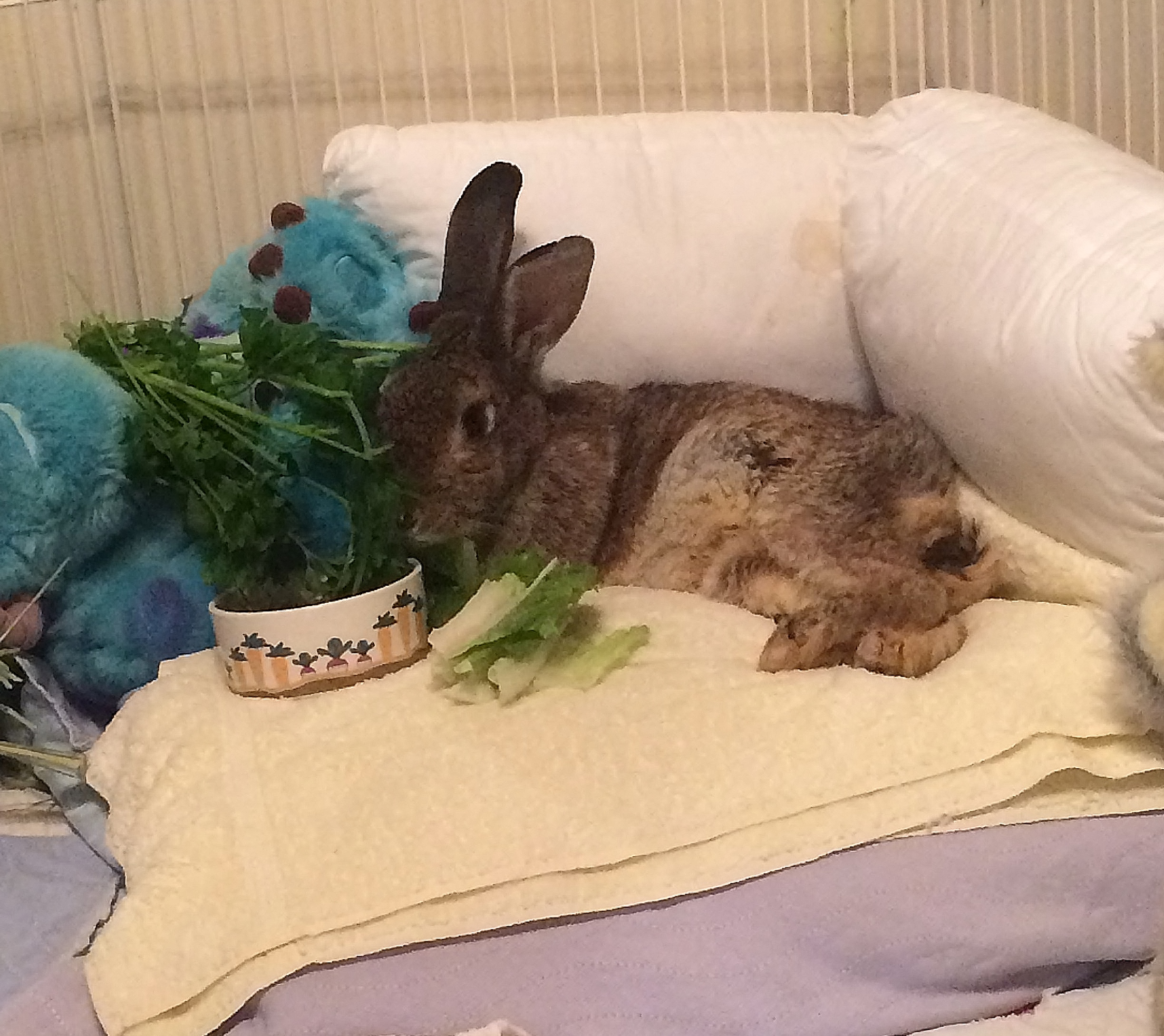 Queen Petra. Your human is here to serve you.
Queen Petra. Your human is here to serve you.The thought of senior rabbit care can seem overwhelming, especially if your elder bunny is already sick or showing signs of aging. However, senior rabbit care really boils down to three questions: Is my bunny comfortable? Is he clean? Is he dry? How you answer these questions will guide you to what needs to be done so you can answer 'yes'.
1. Is My Rabbit Comfortable?
This question covers several areas of senior rabbit care, such as environment, food and medication. For example, if you notice that your rabbit is struggling to get into the litter box and reluctant to move, the answer to this question is no. What needs to be done? Maybe a visit to the vet to see what a problem could be. Is it arthritis? If yes, perhaps medication and/or some physical therapy and acupuncture will give your bunny some relief. Maybe a change in the environment, such as a low entry litter box and orthopedic bed, is necessary. Is your bunny losing weight? Maybe adding more pellets to the diet would be helpful. Can he still reach the water? Is he thirsty? Perhaps you need a lower water bowl or a bottle.
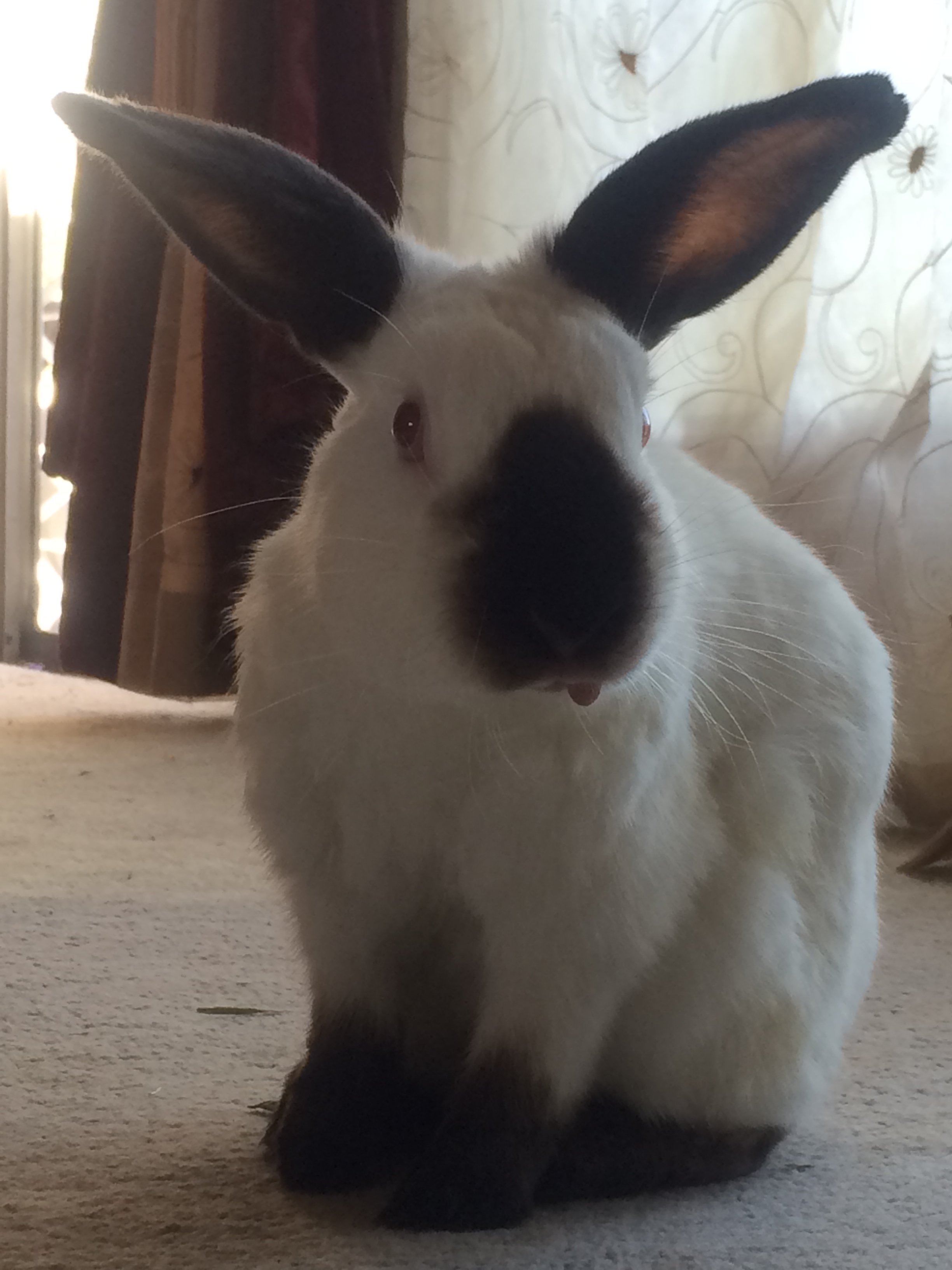 Slim Jim was a strange little guy with a number of neurological issues, including limited vision. His exact age was not known, but he was probably already a senior at the time this photo was taken.
Slim Jim was a strange little guy with a number of neurological issues, including limited vision. His exact age was not known, but he was probably already a senior at the time this photo was taken.2. Is my bunny clean?
Whether your bunny adopts a more liberal definition of a litter box or is unable to utilize one, it is essential a bunny stays clean as much as possible. If your bunny is experiencing rear-end paralysis and you ignore the situation, the bunny will be covered in poop, cecotrophes and urine. The urine can burn the skin. In severe cases, cecotrophes and poop can harden around the groin area, creating a type of 'lid' over the anus. Of course, letting feces and urine build-up on the bunny encourages flystrike, which is life threatening.
Keeping a bunny clean involves changing the litter box more often or simply having an extra towel or two in the pen and changing it daily. If you have a bunny with paralysis, you want to have a collection of fleece or other soft bedding and change it 1-2x daily.
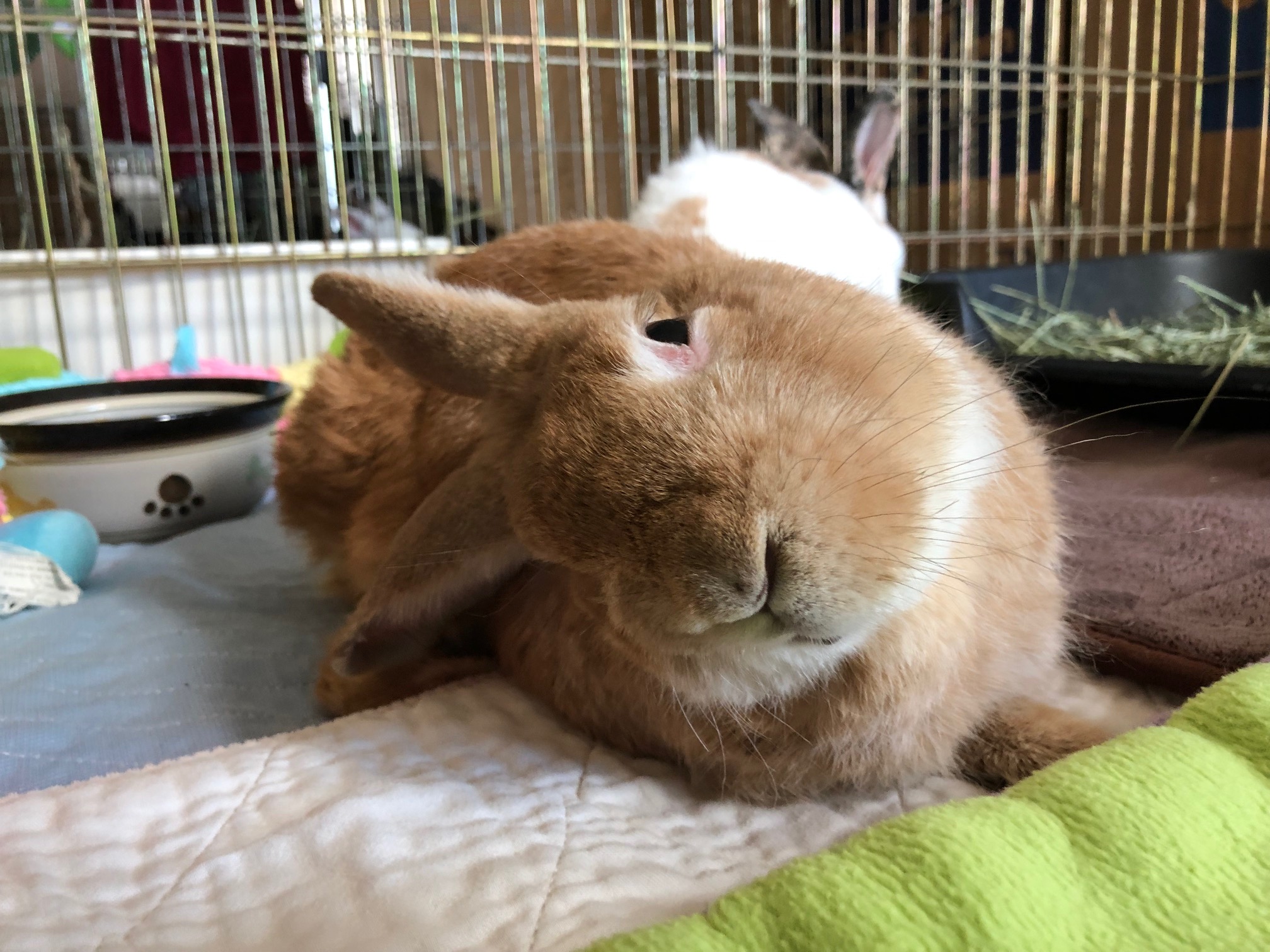 Poppy keeping an eye on me.
Poppy keeping an eye on me.3. Is my bunny dry?
This goes hand-in-hand with the previous question. Once you give your bunny a butt bath, make sure he is dry. In cases of rear-end paralysis, the rear legs often stiffen, making it impossible for a bunny to clean or dry themselves. Keeping the skin and fur clean and dry prevents the skin from breaking down and getting infected. Also, you don't want your elderly bunny to lay on a damp bed all day, lowering his body temperature. Sometimes if they have rolled over some damp herbs or spilled some water, a towel rub and quick comb out might be all they need to keep them looking and feeling their best.
The answers to the above questions will guide you to your daily routine. Every bunny will be slightly different and it will be helpful to reach out to your local rabbit rescue, social media groups or other bunny owners to get tips and ideas for specific problems.
The next few articles on senior rabbit care will go into more depth on some of the specific challenges your elder bunny may face.
Available Now!
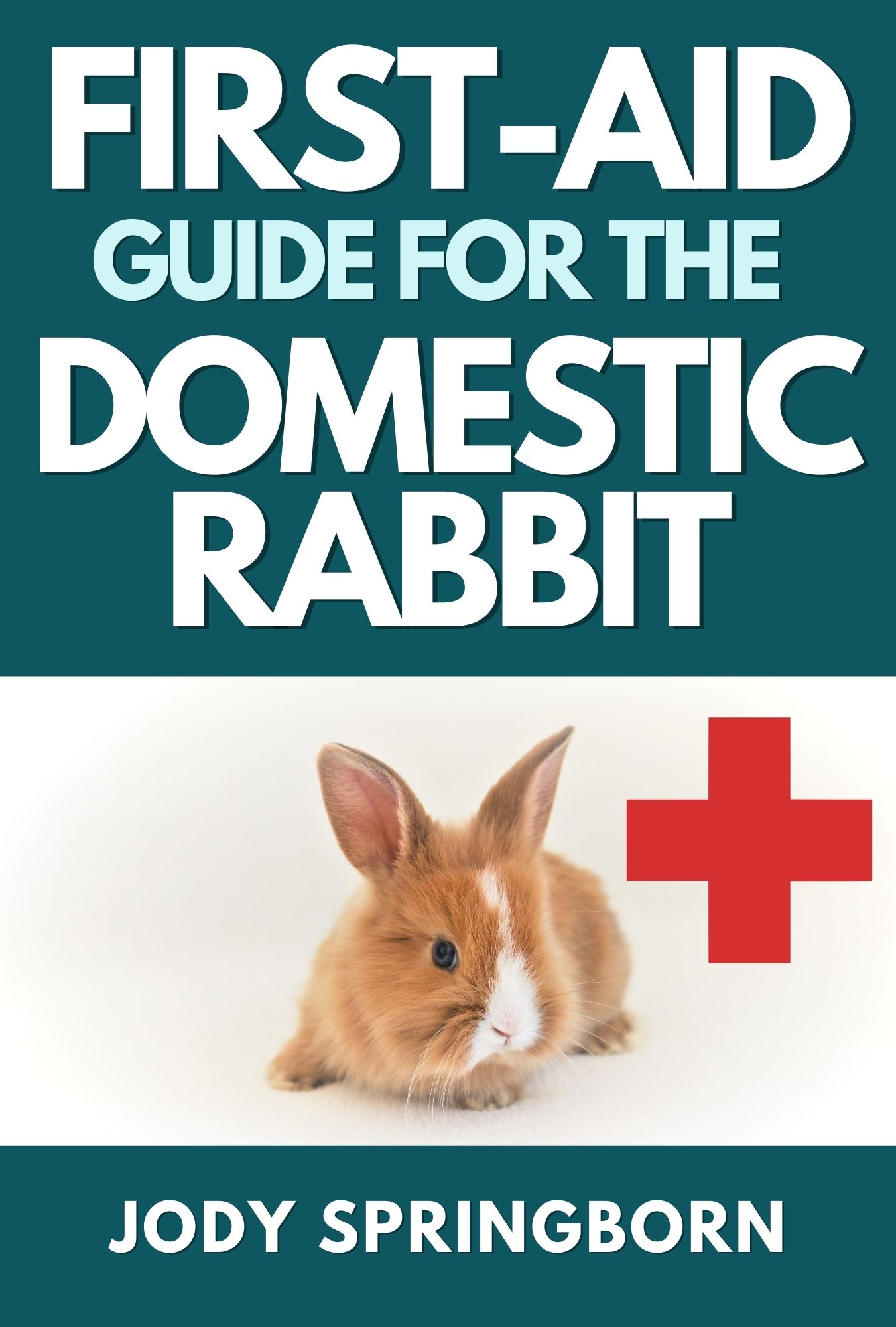
Often times, rabbit health issues require immediate attention. My First Aid Guide for the Domestic Rabbit will show you the most common health issues and teach you the basic skills you should have when your bunny needs you the most. There are over 100 color photos that show you all the supplies you need and how to help your rabbit in easy to follow step-by-step instructions.
Further Reading
Charlotte Street Animal Hospital. Care of the Senior Rabbit.
Koi, S. 2008. Elderbuns. House Rabbit Society Journal Winter 2008: Vol. V, Number 3.
MacGill, M. 2019. Spondylosis: All you need to know. Medical News Today.
Noonan, B. Encephalitozoon cuniculi in Pet Rabbits. MSPCA-Angell.
PetCoach Editorial. Caring for Your Senior Rabbit. PetCoach.
Rabbit Welfare Association & Fund. Caring for Senior Rabbits.
